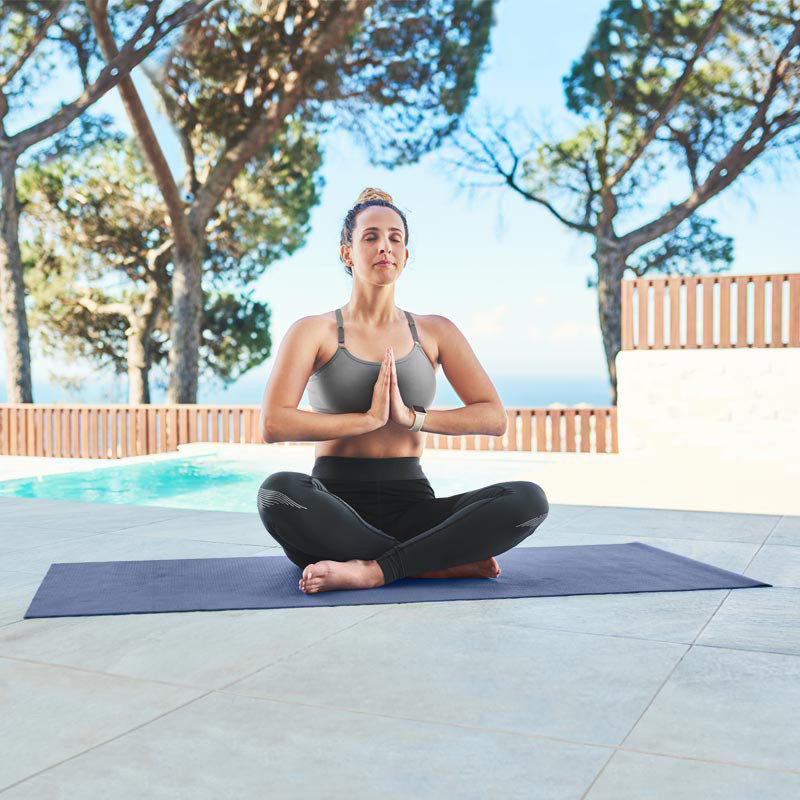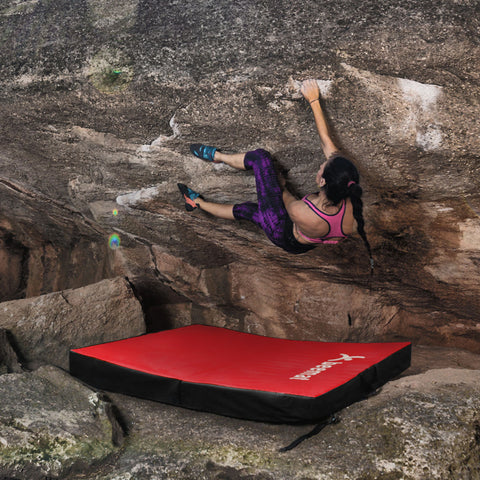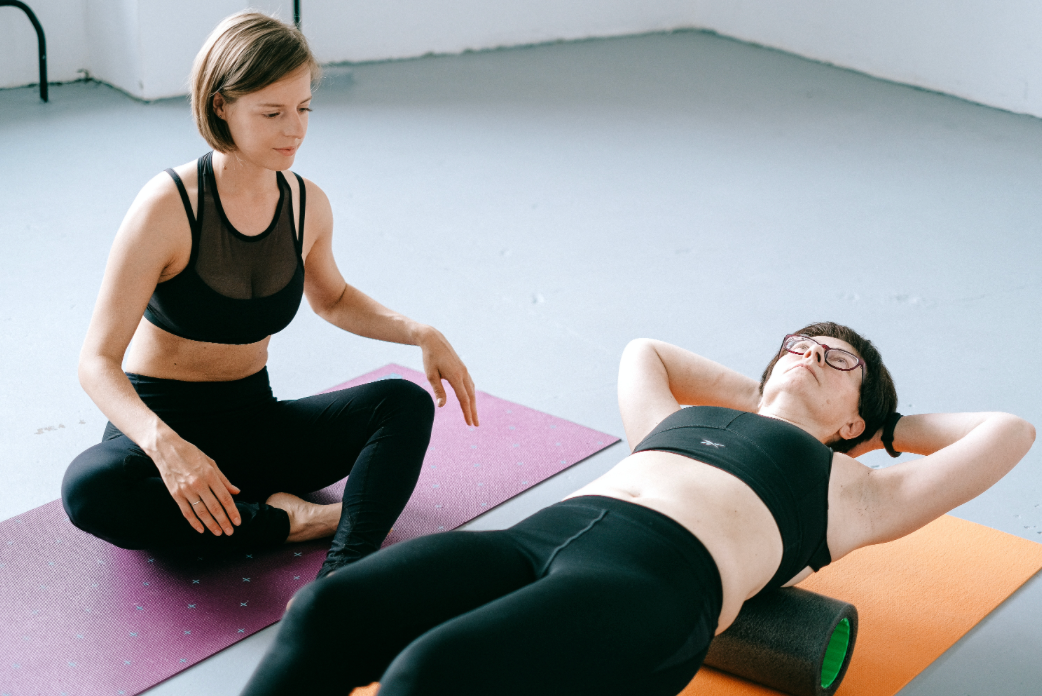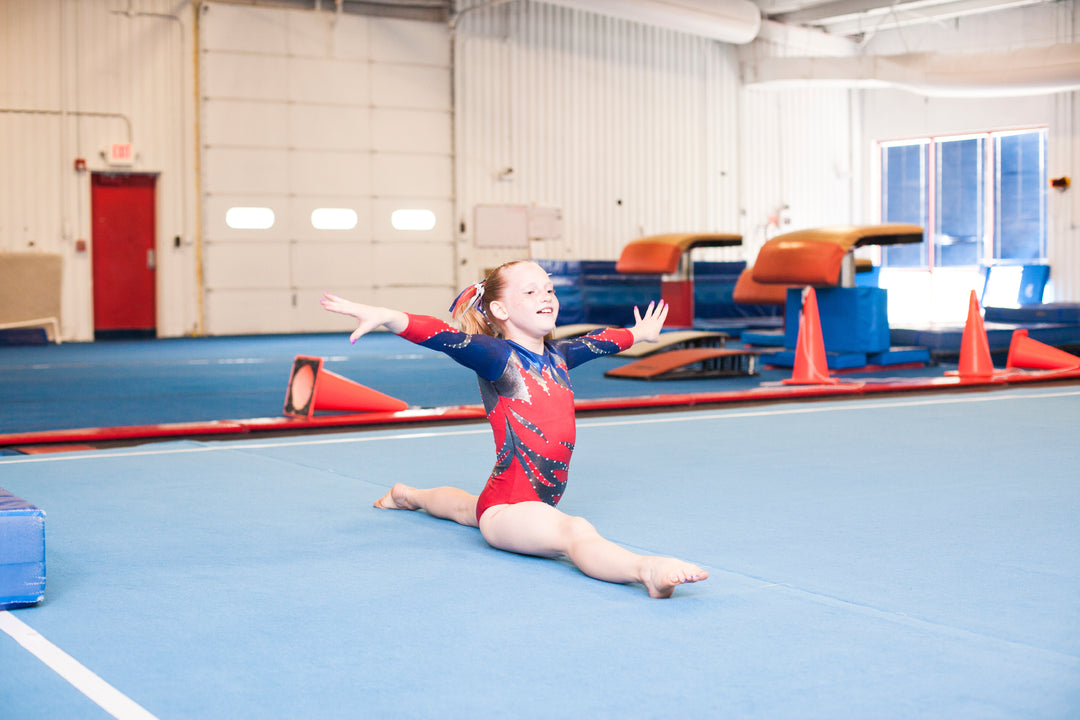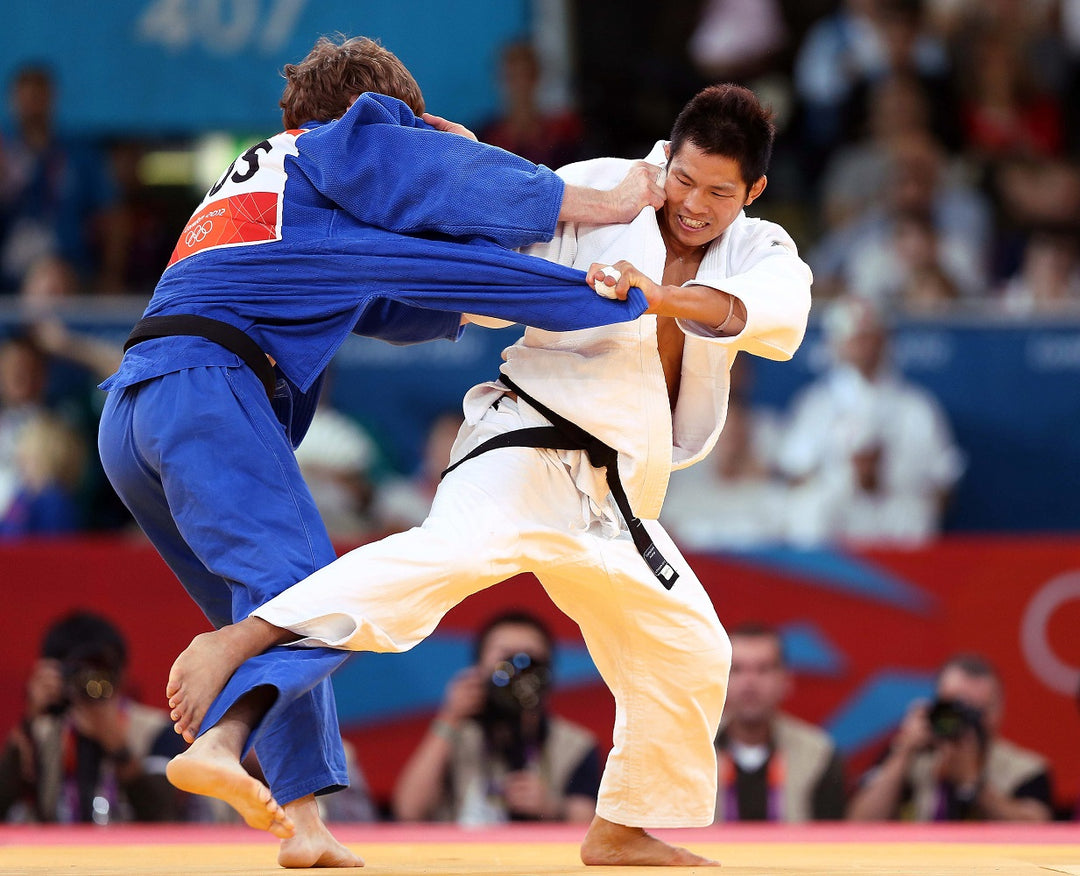The History of Martial Arts

What is Martial Arts and where did it come from
Martial arts is an ancient form of combat consisting of a variety of methods and techniques for fighting, defending oneself, and attacking. It encompasses physical, mental, and spiritual disciplines that help practitioners develop strength and skill. Martial arts styles can vary greatly in terms of the weapons or tools used (including fists, feet, and swords), how much contact is involved in a given technique or practice session (contact-based vs non-contact training), the emphasis on forms or self defense scenarios. Generally speaking, all martial arts style share a common purpose: self-improvement through physical training while incorporating elements of personal discipline.
Martial arts originated from various parts of the world and are believed to have been practiced since at least 2,000 BCE in Ancient Greece. It has evolved over the centuries and many different styles have developed depending on the region or culture in which it was practiced. The most popular forms of martial arts today come from East Asia, including Japan and China, with other popular forms originating from India, Southeast Asia, Europe and Brazil. Many people consider Asia to be the centre of the martial arts world as many of the most prominent martial arts such as kung fu, karate and hwa rang originate from the region.
Over the years, martial arts have been shaped by a culmination of factors to include ancient myths and legends to historical revolutions. Since the beginning of time, different cultures have developed styles of fighting in order to survive, but it is Chinese martial arts that has endured and flourished more than in any other country.
Martial arts evolved with the development of the human physiology and has grown into what we now recognise as martial arts in the modern era. Below, Beemat takes a look at the history of martial arts and how it has evolved over thousands of years to become what it is today.
Receive 10% off your Beemat order by clicking on this link | Discount automatically applied
Creation of Martial Arts
Martial arts techniques were created out of the need for survival between humanity and animals, and between different tribes of humans. From these battles, experiences and techniques were accumulated and recorded then passed down through the generations.
Teaching Martial Arts
The teaching of martial arts in Asia has historically followed cultural traditions - students are trained in a strictly hierarchical system by a master instructor. The students are expected to memorise and recite as closely as possible the rules and basic training of martial arts whilst the teacher is expected to directly supervise the student's training.
Students with more seniority are considered 'older brothers and sisters' whilst those with less seniority are 'younger brothers and sisters', and these relationships are clearly delineated and designed to develop good character, patience and discipline amongst students.
In some Asian countries, a student's skills were tested for mastery before being allowed to study further - this traditional style has been widely ignored by many of the modern teachings in the West.
Martial arts is an incredibly diverse field, with many different forms and styles to learn. For example, some popular martial arts are karate, taekwondo, judo, aikido and jiu-jitsu. Each of these martial arts has its own unique set of rules and techniques for teaching the various disciplines involved in the practice.
When it comes to learning martial arts, the most important aspect is to find an experienced teacher who can guide you through the basics. Most martial arts teachers will start by explaining the fundamentals of the art form and breaking down each move so that it can be practiced properly. From there, students can begin to learn more complex techniques such as self defense moves and offensive techniques like striking and kicking. Additionally, certain types of martial arts may also focus on grappling tactics or weapons training; therefore having a comprehensive understanding of these skillsets is essential to mastering any style of martial art.
Furthermore, when learning martial arts from an experienced instructor it is important that both parties have trust in each other’s abilities - especially when practicing advanced techniques such as self-defence manoeuvres or weapon techniques. Through this process both teacher and student are growing together in knowledge; building a bond based on experience which helps them better understand one another’s perspectives about using the art form for self-improvement or competitive purposes.
Overall, teaching martial arts requires several ingredients including patience from both teacher and student; as well as willingness to take risks in order to progress further into the complexities associated with this ancient combat system. With dedicated practice comes great rewards - not only will you get better at your chosen skill set but you’ll also gain confidence that translates into all facets of life outside the dojo setting.

Martial Arts can be enjoyed by people of all ages and abilities
Martial arts can be enjoyed by people of all ages and abilities, providing an enjoyable form of physical activity that can help to improve balance, coordination, and strength. The various types of martial arts available provide something suited to everyone regardless of age or ability level. For younger children, martial arts classes can offer a great way to stay active and learn discipline. Older adults may also benefit from the physical activity offered by martial arts, as well as the social aspects and improved sense of wellbeing that comes with regular practice.
The practice of martial arts has been linked to improvements in physical health including cardiovascular health, improved balance and coordination, increased muscle strength and endurance, increased flexibility, weight loss, and improved posture. In addition to the physical benefits, it provides mental health benefits such as reducing stress levels, improving self-esteem and confidence, increasing concentration levels and focus, improving sleep patterns, and introducing a sense of discipline into daily life. Martial arts can also be enjoyed socially - many schools offer groups or clubs where adults or children can come together to learn new techniques while having fun in a supportive environment.
Different types of martial arts such as Karate, Taekwondo or Judo provide different benefits - for instance Karate focuses on hand-to-hand combat while Taekwondo emphasises kicks; Judo on grappling techniques etc., so individuals can choose the one they prefer best. While some styles are more suitable for certain age groups than others (for example Kung Fu is not recommended for young children), overall there is something suitable for everyone regardless of their age or ability level.
The different types of martial arts and their origins
Martial arts have been around for centuries, originating in many different cultures and countries. Perhaps the most recognisable form of martial arts is karate, which originated in Okinawa, Japan during the 1700s. Karate focuses on punching and kicking movements, as well as weapons training. Judo is another popular style that was founded by Jigoro Kano in Japan during the 1800s. It emphasises a series of throws and grappling techniques to subdue an opponent.
Aikido also has its roots in Japan and was developed by Morihei Ueshiba in the early 1900s. Aikido combines elements from various martial arts styles such as Jujitsu, swordsmanship, and spear fighting. The goal of Aikido is not to injure your opponent but rather to use their own energy against them to disarm or control them without causing any harm.
Kung Fu is a Chinese martial art that dates back thousands of years with origins in Shaolin Monastery. Kung fu consists of various forms such as Wing Chun, Northern Shaolin, Tai Chi Chuan along with other styles depending on region and lineage. It includes strikes achieved through hand-to-hand combat as well as weapons such as staffs and swords.
Taekwondo is a Korean martial art that has gained popularity over the last few decades due to its impressive board breaking feats and powerful kicks. Taekwondo was developed in the 1940’s by General Choi Hong Hi during Japanese occupation who adapted elements of Japanese Shotokan Karate along with traditional Korean Martial Arts such as Taekkyon and Gwonbeop into what would eventually become Taekwondo today.
Brazilian Jiu Jitsu (BJJ) is a grappling based style which borrows heavily from Judo but adds additional ground-based techniques for taking down an opponent without using strikes or throws. BJJ was created in Brazil by brothers Carlos and Helio Gracie who adapted traditional judo moves for self defense purposes. BJJ has evolved into one of the most popular martial arts today due to its success within mixed martial arts competitions like UFC where it gives even smaller fighters an advantage against larger opponents if they are trained correctly.
Finally Muay Thai or Thai Boxing is another combat sport which originated from Thailand centuries ago and has grown immensely in popularity due to its applications within mixed martial arts competitions such as UFC where fighters must be proficient at striking while remaining off their back on the ground where they may be more vulnerable to submissions or strikes from their opponents. Muay Thai incorporates punches, kicks, elbows, knees, clinch work , sweeps , trips etc into a lethal combination that can quickly disable an opponent if utilised correctly . While there are hundreds of martial arts styles all over the world these are some of the most common ones practiced today each with their own unique origins , history , techniques , strategies , philosophy's etc which make them unique compared to one another.

The benefits of practicing martial arts
Martial arts are a great way to improve physical and mental health. There are numerous benefits that can be gained from regular martial arts practice, such as increased strength, flexibility, balance, coordination, and endurance. Martial arts can also help reduce stress levels, improve self-esteem, and boost confidence.
One of the biggest benefits of practicing martial arts is the improved physical fitness that comes with it. Regular martial arts training can result in increased muscle tone and greater physical strength, which can help to improve overall physical health. Strength training through martial arts also creates better posture and joint stability while improving core strength. Additionally, martial arts can play an important role in weight loss efforts by increasing caloric expenditure during exercise.
The second major benefit of practicing martial arts is mental clarity and focus. Through martial arts movements and techniques, practitioners create a calm mind that allows for more alertness and improved concentration ability throughout their daily activities. This heightened focus in turn leads to better decision-making abilities and higher productivity levels when working or studying. Martial artists often report feeling more relaxed after engaging in a sparring session or training drill because it helps them to refocus their energy on positive tasks instead of negative thoughts or worries.
Thirdly, the discipline required for learning martial arts develops self-discipline that carries over into other areas of life such as work or school performance. Following a set of rules within the dojo encourages obedience at home and at work since students learn how to follow instructions quickly as well as how to take criticism positively. This new-found sense of discipline can result in improved academic performance due to better study habits along with more success at work since employees understand how valuable following rules is on any job site.
Finally, another huge benefit from regular participation in martial arts classes is the social interaction it offers its students which can help reduce feelings of isolation or loneliness that may come from daily life stressors like work or school responsibilities. Meeting new people within the same class setting encourages healthy relationships while developing communication skills needed for successful interactions with others both inside and outside the dojo community. It also provides opportunities for exercise partners that keep each other motivated throughout their practice sessions which further enhances their overall experience within a visual setting like a karate class or boxing gymnasium environment.
In conclusion, there are many benefits associated with regularly practicing any type of martial art ranging from improved physical fitness levels to stronger mental clarity and focus abilities as well as enhanced social interaction capacities all around! If you're looking for an effective way to stay healthy physically and mentally while making some great friends along the way then consider trying out one of these combat sports.
Famous martial artists and their contributions to the art form
Martial arts are ancient combat practices that have been practiced for centuries in cultures around the world. Whether it’s kung-fu, taekwondo, judo, karate, or aikido, martial arts have been used to protect and defend oneself over the years. Throughout history, many famous martial artists have made major contributions to the art form and influenced countless generations of martial artists.
Bruce Lee is one of the most recognizable names in martial arts today. He was a Hong Kong-born American actor who also taught various forms of Kung Fu. He studied Wing Chun under Ip Man and was known for his philosophy on martial arts and life in general. Perhaps his most enduring legacy was his belief that there is no such thing as one single style or technique – instead he believed that all styles had something to offer and should be combined to create something greater than its individual components.
Grandmaster Kyuzo Mifune was considered one of the greatest practitioners of Judo by many within the martial arts community. He has been credited with several innovations including two distinct throwing techniques: uchimata (inner thigh throw) and okurigari (major outer reap), which are still popular today. His mastery of Judo earned him recognition as an honorary 10th dan rank in 1955 — a rank traditionally given only to founders of Judo schools — making him only one of two people ever awarded this rank in Japan's history.
Mas Oyama is another famous figure closely associated with Karate. A student of Gichin Funakoshi, he became renowned for his dedication to mastering Karate-do through intense physical training regimens such as breaking bricks and heavy objects with bare hands or feet as well as meditating upon Mount Hiei near Kyoto for 15 days without rest or food, while focusing on himself and his spiritual development through Karate practice. Mas Oyama went on to become the founder of Kyokushin Karate which introduced full contact sparring into traditional Karate practice — a feature now seen throughout various forms of martial arts today, including MMA competitions.
These masters are just some examples among countless others who have dedicated their lives to furthering the art forms they loved through their own practices and innovations — inspiring generations of martial artists across cultures all over the world! As time goes on each new generation can look back upon these great figures from our past and reflect upon what they have achieved; learning from their successes and using them as an example for living our own lives better according to their wisdom.
How has martial arts evolved over time
Martial arts have existed in some form since the very beginnings of human civilization. The earliest records of martial arts date back to ancient China, where combat styles were used for training in warfare and self-defense. Over time, martial arts evolved and spread across Asia, later becoming popular in Europe and the Americas.
The most influential form of martial art is probably karate, originating from Okinawa in the 17th century. Karate was developed by combining techniques from different traditional fighting styles such as Chinese kung fu and Okinawan weapon arts. It has become a popular form of self-defense, sport, and physical fitness worldwide.
Another important martial art is judo, which originated from Japan in the late 19th century. Judo was created by combining classical jujutsu techniques with modern sports principles such as competition and safety rules. Judo has grown to become an Olympic sport today, with many practitioners competing professionally all over the world.
In recent decades, a new type of martial art known as mixed martial arts (MMA) has emerged on the scene. MMA combines elements from various combat disciplines such as boxing, judo, Muay Thai kickboxing, jiu-jitsu, wrestling, and many more. This hybrid style emphasizes using a combination of striking and grappling techniques to defeat opponents both standing up or on the ground.
Modern versions of classic martial arts have also continued to evolve over time due to increasing influence from other cultures around the world as well as improvements in technology such as increased access to protective gear for athletes engaging in martial sports competitions. As a result, there are now numerous styles practiced around the world that incorporate elements from various sources while remaining true to their original forms at their core.
The evolution of martial arts is ongoing and ever-changing; it is constantly influenced by global trends and shifts in culture while still paying homage to its historical roots by honoring past masters who passed on their knowledge. Martial arts remains an important part of many people's lives today; not only by providing self-defense skills but also offering health benefits including improved physical health endurance through rigorous exercise regimes while helping individuals develop emotional intelligence and self-discipline through intense mental focus involved with each session devoted to practice.
Modern Martial Arts
The western interest in East Asian Martial Arts dates back to the late 19th Century around the time when there was an increase in trade between America and China and Japan. Very few westerners actually practiced the arts initially, they saw it as more of a dramatic performance.
It wasn't until a great number of military personal from the West spent time in Korea, China, Japan and further afield that soldiers gradually began to recognise the value of Eastern martial arts in Western culture and it was this that promoted the start of training.
During World War II, William E. Fairbairn, a Shanghai policeman and a leading Western expert on Asian fighting techniques, was recruited by the Special Operations Executive (SOE) to teach the UK, U.S and Canadian Commando and Ranger forces Jujitsu. After the War, a large number of American servicemen remained in Japan and the adoption of martial arts within Western culture continued.
By the 1950s, large groups of U.S Military personnel were taught Korean arts during the Korean war as a method of self-defence and survival. After their demobilisation, many soldiers brought their training home and continued to practice and teach.
By the 1970s, Japanese arts such as Karate and Judo had become popular, and martial artist Bruce Lee's presence in martial arts movies caused a further rise in popularity of Chinese martial arts (kung fu).
In the 1980s, Sport Karate became a major international sport with professional fighters rewarded large prizes, TV coverage and sponsorship deals.
The future of martial arts
The future of martial arts is an exciting prospect as it continues to evolve and become more popular. With the growing fitness and health trend, martial arts are becoming increasingly appealing to people of all ages and walks of life. It is a great physical activity that teaches discipline, respect, self-defense, and mental strength. As the sport continues to grow, so does its potential for innovation and development.
In the coming years, technology will continue to play a role in making martial arts more accessible than ever before. Digital platforms are offering virtual classes, workshops, or video tutorials on martial arts skills worldwide. This allows enthusiasts to practice wherever they may be without having to search for an instructor. Additionally, gamers can participate in virtual tournaments in games like Tekken or Street Fighter as well as learn techniques from professional fighters who are now featured in different gaming titles.
Another fascinating development that may affect martial arts is augmented reality (AR). AR could provide training mechanisms such as interactive lessons with 3D visuals that simulate real-life scenarios which would benefit fighters immensely by giving them realistic training experiences at home or in their local dojos. Moreover, using robotics technology in order to replicate various martial art moves could mean that practitioners can practice against opponents with greater accuracy.
Finally, there has been a renewed focus on promoting healthy lifestyle habits through martial arts such as meditation and mindfulness practices which help practitioners stay centered while developing mental toughness and self-awareness. Martial artists now have access to personal trainers or coaches who offer tailored advice and guidance on nutrition, weight management, injury prevention, rehabilitation exercises, and other topics related to overall wellbeing.
It's clear that the future of martial arts looks very promising indeed – with technology playing an increasingly important role in how it's practiced today and will remain a key factor in its advancement going forward into the 21st century.


